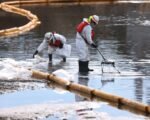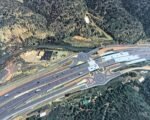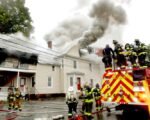A recent report has identified several hot zones in Grand Junction, Colorado, highlighting areas that are experiencing significantly higher temperatures compared to their surroundings. The study, conducted by local environmental agencies, aims to raise awareness about the impact of urban heat islands and the need for effective mitigation strategies. These hot zones are primarily concentrated in densely populated and industrial areas, where concrete and asphalt surfaces contribute to higher temperatures. The findings underscore the importance of urban planning and green initiatives to combat rising temperatures.
Identifying the Hot Zones
The report pinpointed several key areas in Grand Junction that are consistently hotter than their surroundings. These hot zones are primarily located in urban and industrial regions, where the concentration of buildings, roads, and other infrastructure contributes to elevated temperatures. The study utilized satellite imagery and ground-based temperature measurements to identify these areas, providing a comprehensive overview of the city’s heat distribution.
One of the most affected areas is the downtown district, where the density of buildings and lack of green spaces exacerbate the heat island effect. Industrial zones, with their extensive concrete surfaces and machinery, also contribute significantly to higher temperatures. Residential neighborhoods with limited tree cover and green spaces were also identified as hot zones, highlighting the need for more urban greenery.

The report emphasizes the importance of addressing these hot zones through targeted interventions. Increasing green spaces, implementing cool roofing technologies, and enhancing urban planning are some of the recommended strategies to mitigate the heat island effect. By focusing on these areas, the city can improve the overall quality of life for its residents and reduce the impact of extreme heat.
Impact on Public Health
The elevated temperatures in these hot zones have significant implications for public health. Prolonged exposure to high temperatures can lead to heat-related illnesses, such as heat exhaustion and heat stroke. Vulnerable populations, including the elderly, children, and individuals with pre-existing health conditions, are particularly at risk. The report highlights the need for public health initiatives to address these concerns and protect the community.
One of the key recommendations is the establishment of cooling centers in hot zones, providing residents with a safe place to escape the heat. These centers can be set up in community centers, libraries, and other public buildings, offering air-conditioned spaces and hydration stations. Public awareness campaigns are also crucial in educating residents about the risks of heat exposure and the importance of staying hydrated and cool.
The report also calls for increased monitoring of heat-related illnesses and the implementation of early warning systems. By tracking temperature trends and health data, authorities can better predict and respond to heat waves, ensuring timely interventions to protect public health. Collaboration between environmental agencies, healthcare providers, and community organizations is essential in addressing the health impacts of urban heat islands.
Mitigation Strategies and Future Planning
To effectively combat the heat island effect, the report outlines several mitigation strategies that can be implemented in Grand Junction. One of the primary recommendations is the expansion of green spaces and urban forestry programs. Planting more trees and creating parks and gardens can significantly reduce temperatures in hot zones by providing shade and enhancing evapotranspiration.
Another key strategy is the adoption of cool roofing and paving technologies. These materials reflect more sunlight and absorb less heat, helping to lower temperatures in urban areas. Incentive programs can encourage property owners to install cool roofs and pavements, contributing to a cooler city environment. Additionally, the report suggests the integration of green roofs and walls in new and existing buildings, further enhancing the cooling effect.
Urban planning and zoning regulations also play a crucial role in mitigating the heat island effect. The report recommends incorporating heat mitigation measures into city planning processes, ensuring that new developments prioritize green spaces and sustainable building practices. By adopting a holistic approach to urban planning, Grand Junction can create a more resilient and livable city for its residents.













